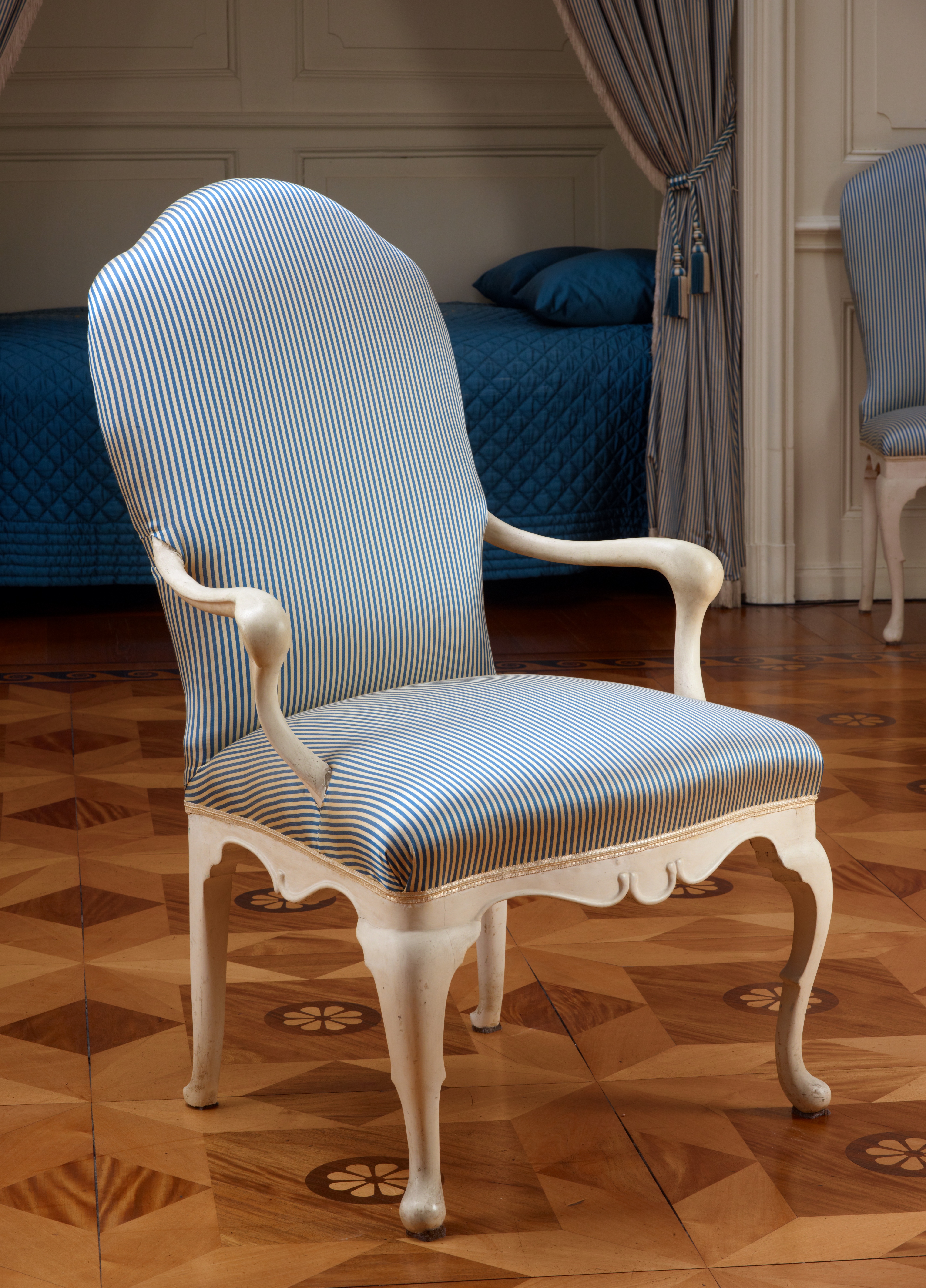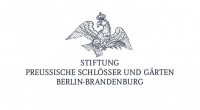Der einfache, weiß gefasste Armlehnstuhl gehört zur Erstausstattung der Kavalierzimmer von Schloss Sanssouci aus dem Jahr 1747 und hatte seither einen blau-weiß gestreiften Bezug. Seine Gestaltung mit der Art der Beine, den Padfeet und den Armlehnen beruht auf englischen Vorbildern. Er wurde in mehreren Varianten über die Jahrhunderte nachgebildet.
en

